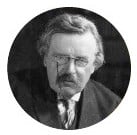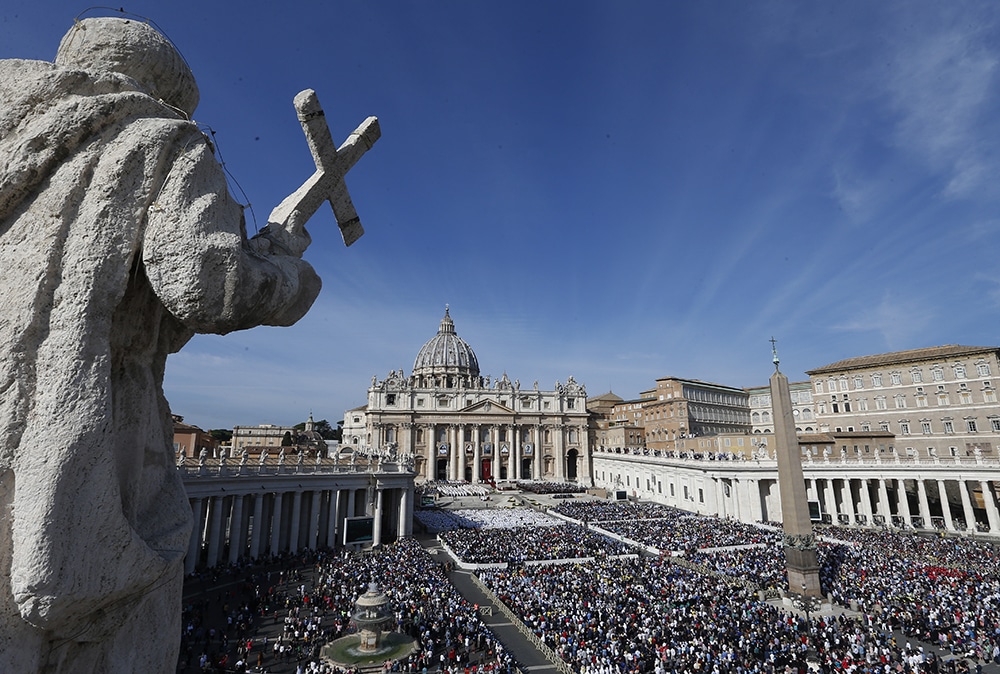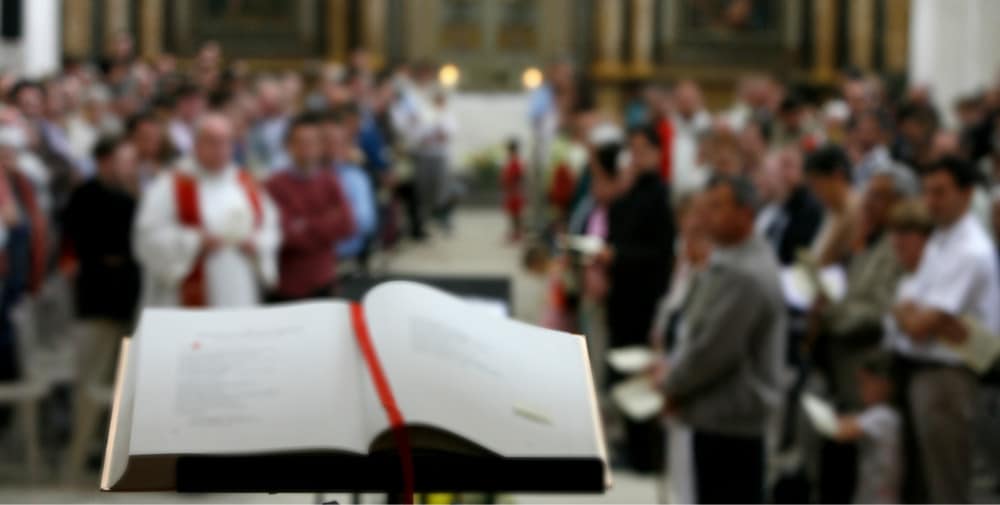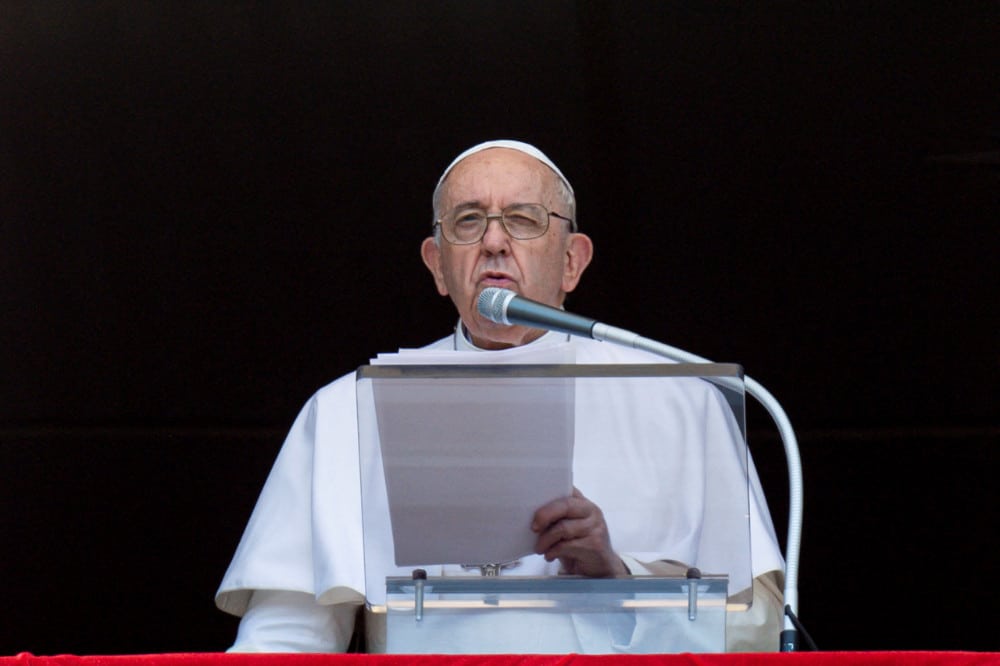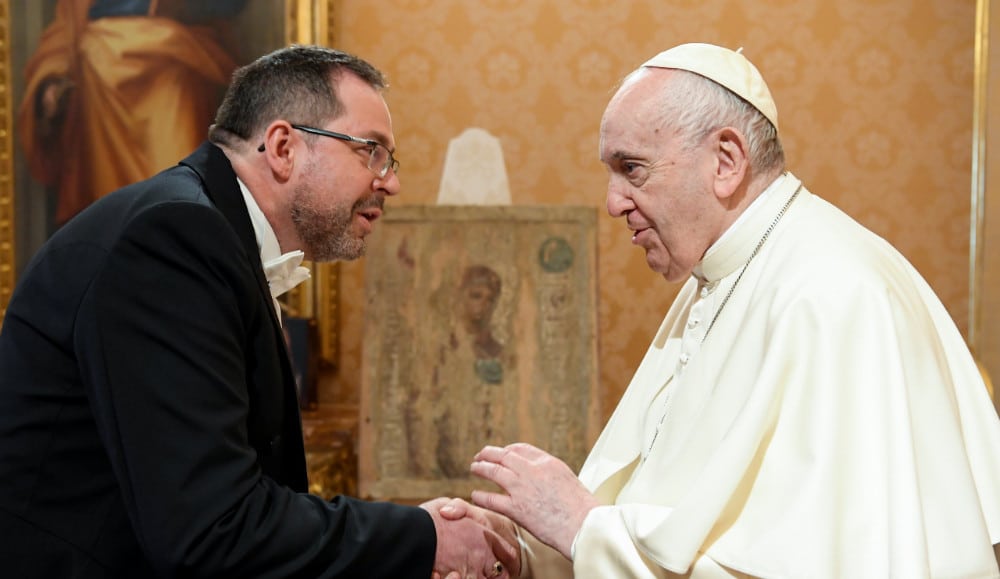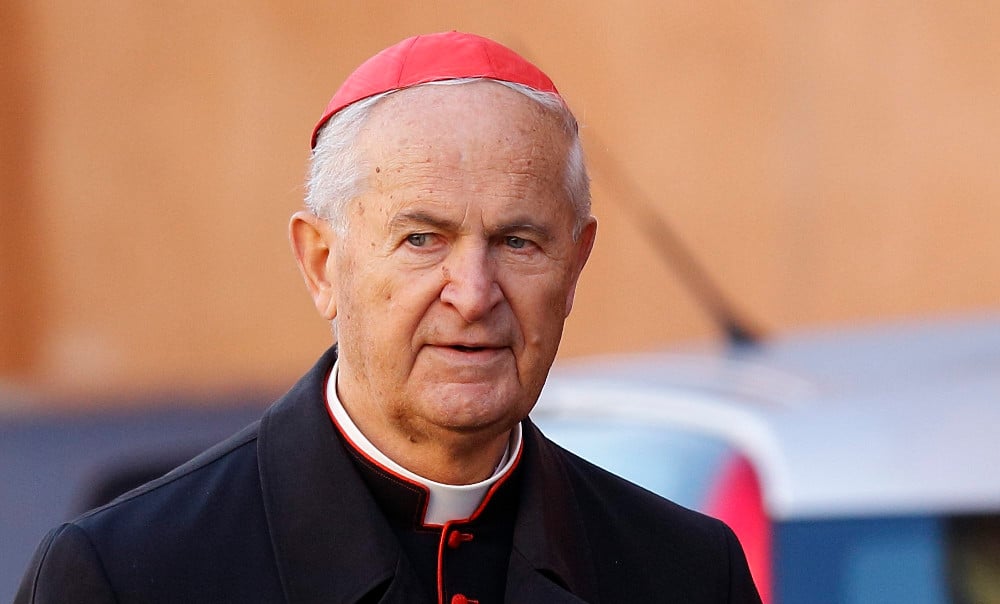Each of the quotes below is famous because it pinpoints a truth that is simultaneously reassuring and startling. Yes, the Eucharist is more than a symbol. Yes, children do know about danger. They also need to know it can be overcome. Yes, the Catholic faith is good, delicious and life-affirming.
These quotes are just the tip of the iceberg. We’re going to dive past the quotes and into the work of six great Christian authors of the 20th century to see why they’re so often talked about and cited in the Catholic world. Most people have a superficial sense of these writers and their works. C.S. Lewis and J.R.R. Tolkien are well-known for tales of Narnia and hobbits. Flannery O’Connor seems disturbing, G.K. Chesterton seems confusing, and Graham Greene seems depressing. Hilaire Belloc is practically forgotten — except for the quote above.
But what they all share is a love of Christ and a unique way to bring his message to the world. They wrote to help us readjust our vision to the correct angle for a deeper truth. If you’ve read these authors’ well-known works, we’ve got treasures off of beaten paths. If you have been intimidated by their reputations, we’ve got the perfect “gateway” work to help you see the world — and the Faith — through their eyes.
“Well, if it’s a symbol, to hell with it.” — Flannery O’Connor, speaking about the Eucharist
“Fairy tales do not tell children the dragons exist. Children already know that dragons exist. Fairy tales tell children the dragons can be killed.” — G.K. Chesterton
“Wherever the Catholic sun doth shine, there’s always laughter and good red wine.” — Hilaire Belloc
G.K. Chesterton
Standing on his head
There’s no one so quotable as G.K. Chesterton, partly because he is so good at catching our attention with paradoxes.
 A paradox is a seeming contradiction that goes against common sense, such as when Christ says, “The first shall be last and the last shall be first.” We’re used to the true meaning, but when you look closely, at first sight it doesn’t make any sense. Chesterton was so good at this that he was nicknamed “The Prince of Paradox.”
A paradox is a seeming contradiction that goes against common sense, such as when Christ says, “The first shall be last and the last shall be first.” We’re used to the true meaning, but when you look closely, at first sight it doesn’t make any sense. Chesterton was so good at this that he was nicknamed “The Prince of Paradox.”
Chesterton’s writing all demonstrates his genius at getting us to look outside our usual way of thinking. His prodigious output of 80 books and 200 stories have influenced generations of writers and thinkers from C.S. Lewis and Mahatma Ghandi to more modern writers such as Dorothy Day and Neil Gaiman.
Chesterton, who lived from 1874-1936, had a winding road to the Catholic faith. Raised Unitarian, he and his brother dabbled in the occult, but his wife’s influence led him to Anglicism. A few years later, he became Catholic. Chesterton’s essay, “Why I am Catholic,” shows what he loved about the Church: “The difficulty of explaining ‘why I am a Catholic’ is that there are 10 thousand reasons all amounting to one reason: that Catholicism is true. … I would rather try to suggest that it is not only larger than me, but larger than anything in the world; that it is indeed larger than the world. But since in this short space I can only take a section, I will consider it in its capacity of a guardian of the truth.”
One of Chesterton’s most endearing qualities was his talent for being friends with people he disagreed with. He defended Christianity in public debates with such notables as George Bernard Shaw and H.G. Wells. Yet, the debates usually ended with everyone going to dinner together. Shaw and Wells both remained close friends with Chesterton until his death.
“Paradox — truth standing on its head to gain attention.”
Chesterton exhibited great wit and logic. The most serious of his books had glints of humor, and many were just downright funny, even while helping to explain how to properly look at the world and matters of the spirit.
The “Father Brown Mysteries” are still popular today. They feature a crime-solving priest whose knowledge of human nature allows him to pinpoint evil-doers. Father Brown’s point of view is theological, although he also uses reason to solve the mysteries.
In nonfiction, “Orthodoxy” is far and away his most well-known book. “The Everlasting Man” is Chesterton’s response to H.G. Wells’ book “The Outline of History,” which portrayed man as merely a clever animal and Jesus Christ as simply a charismatic man. Chesterton’s spiritual journey of Western civilization in “The Everlasting Man” seems very modern since these are some of the same arguments we still face today.
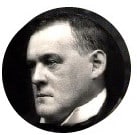 Hilaire Belloc
Hilaire Belloc
Comic verse and history
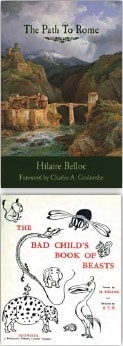 It’s obvious that Hilaire Belloc hits the nail on the head with straight-forward force. A first-rate historian, Belloc’s writing not only brought events to life but also promoted deeper thought from his readers. His versatility as a writer and lively sense of humor make him a pleasure to read. Like his good friend, G.K. Chesterton, he was a prolific writer, with more than 150 books to his credit. He also was an orator, political activist, essayist and poet.
It’s obvious that Hilaire Belloc hits the nail on the head with straight-forward force. A first-rate historian, Belloc’s writing not only brought events to life but also promoted deeper thought from his readers. His versatility as a writer and lively sense of humor make him a pleasure to read. Like his good friend, G.K. Chesterton, he was a prolific writer, with more than 150 books to his credit. He also was an orator, political activist, essayist and poet.
Born to a French father and English mother in 1870, Belloc was raised in England after his father died when he was 5. His deep Catholic faith affected practically everything he wrote and, indeed, how he lived in England, where Catholics were viewed with deep suspicion. When running for parliament, he responded in this way to his opponent’s slogan, “Don’t vote for a Frenchman and a Catholic.” He said: “Gentlemen, I am a Catholic. As far as possible, I go to Mass every day. This [taking a rosary from his pocket] is a rosary. As far as possible, I kneel down and tell these beads every day. If you reject me on account of my religion, I shall thank God that he has spared me the indignity of being your representative.”
He was elected.
“The run of modern scientific writing takes its form of faith for granted and does not even know that it is a faith.”
Belloc’s writing was highly influential but is not universally known now. He is best known for “The Path to Rome,” his travelog about walking from France to Rome to reaffirm his faith. It is an enchanting blend of anecdotes, philosophy and reflection, all laced with humor.
His comic verse for children is also still popular, in particular, “The Bad Child’s Book of Beasts and Cautionary Tales,” which parodied the Victorian habit of moralizing even the slightest things. Try them for something in the vein of Roald Dahl or the Lemony Snicket stories.
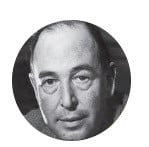 C.S. Lewis
C.S. Lewis
The gift of clarity
When it comes to C.S. Lewis, it’s likely that you’ve either read something he’s written or are familiar with one of his works. Between “The Chronicles of Narnia,” “Mere Christianity” and “The Screwtape Letters,” he may have done more to help explain the Christian faith than any other modern author.
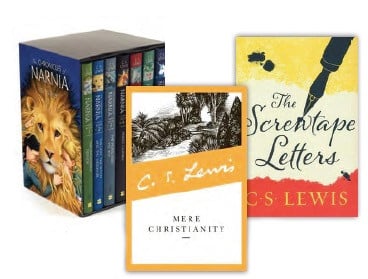 Lewis, born in Ireland in 1898, was a steadfast atheist for a long time. His mother died when he was 9, and he was sent to boarding school, which began his path to denying God. However, his love of mythology and literature paved the way for friendship with a fellow Oxford professor and devout Catholic, J.R.R. Tolkien, who argued that God is real. These discussions culminated in Lewis kneeling in prayer, “perhaps, that night, the most dejected and reluctant convert in all England.”
Lewis, born in Ireland in 1898, was a steadfast atheist for a long time. His mother died when he was 9, and he was sent to boarding school, which began his path to denying God. However, his love of mythology and literature paved the way for friendship with a fellow Oxford professor and devout Catholic, J.R.R. Tolkien, who argued that God is real. These discussions culminated in Lewis kneeling in prayer, “perhaps, that night, the most dejected and reluctant convert in all England.”
This honesty comes across in his books. Lewis understands the human condition. No matter the audience, he is able to find the perfect example to get a point across, which usually adds layers of depth. For example, in “The Four Loves,” he pinpoints the challenge of love: “To love at all is to be vulnerable. Love anything and your heart will be wrung and possibly broken. If you want to make sure of keeping it intact you must give it to no one, not even an animal. Wrap it carefully round with hobbies and little luxuries; avoid all entanglements. Lock it up safe in the casket or coffin of your selfishness. But in that casket, safe, dark, motionless, airless, it will change. It will not be broken; it will become unbreakable, impenetrable, irredeemable. To love is to be vulnerable.”
“I believe in Christianity as I believe that the sun has risen: not only because I see it, but because by it I see everything else.”
In Lewis’ case, there’s nothing wrong with starting with the classics, especially if you haven’t read them — or read them for a long time. If you grew up reading “The Chronicles of Narnia,” try reading them aloud to a child. It will remind you of the impact these stories have on innocent hearts. His less-known science fiction trilogy for adults, which begins with “Out of the Silent Planet,” weaves Christian theological underpinnings throughout exciting tales.
In nonfiction, reading “Mere Christianity” still converts people today. “The Screwtape Letters,” written as if by an assistant demon tempting an average Christian, still has the power to make us take a fresh look at our own lives. Perhaps less well-known is “The Great Divorce,” which is about a bus ride from hell to heaven. It shows reality and our own passions, whether good or bad, in a new light that is both inspirational and enlightening.
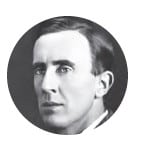 J.R.R. Tolkien
J.R.R. Tolkien
Stories as truth
J.R.R. Tolkien wrote this passage to his son, Christopher, who was far away fighting the Second World War. He returned to this idea in “The Lord of the Rings” trilogy when Sam says, “Don’t the great tales never end?” Frodo replies, “No, they never end as tales. But the people in them come, and go when their part’s ended. Our part will end later — or sooner.”
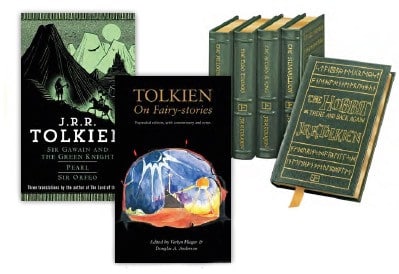 For Tolkien, the great story that he wrote to his son about — the one we are in ourselves — was the story of salvation, told in Scripture and Tradition by the Catholic Church with God as author. He is often called the “father” of modern fantasy, but his worldview was rooted in his devout Catholicism.
For Tolkien, the great story that he wrote to his son about — the one we are in ourselves — was the story of salvation, told in Scripture and Tradition by the Catholic Church with God as author. He is often called the “father” of modern fantasy, but his worldview was rooted in his devout Catholicism.
Born in South Africa in 1892, John Ronald Reuel Tolkien was 4 when his family settled in England after his father suddenly died. When he was 8, his mother converted to Catholicism, which caused her family to disown them and led to a life of great hardship. When she died four years later, she left Tolkien and his brother to the guardianship of a priest.
His natural love of language and stories led to a career as an English language and literature professor at Oxford. This was where he did the work he was proudest of: a seminal critical essay on “Beowulf” and a modern translation of “Sir Gawain and the Green Knight” and “A Middle English Vocabulary.”
His hobby of inventing languages and accompanying myths gradually led to his most famous books. “The Hobbit” was written for his children about Bilbo, who leaves his comfortable surroundings to help capture a dragon’s treasure. The adventures and hardships allow Bilbo to discover hidden treasure within himself.
“Well, there you are a hobbit amongst the Urukhai. Keep up your hobbitry in your heart, and think that all stories feel like that when you are in them. You are inside a very great story!”
“The Lord of the Rings” was the sequel to “The Hobbit,” although it is written for adults. Readers come for the fantasy and epic adventures. They stay because of the story, which begins with an ordinary person taking on the seemingly impossible quest of destroying an evil ruler’s all-powerful ring. Because Tolkien’s world is so richly imagined and his characters are so nuanced, “The Lord of the Rings” is a gripping tale conveying insight into the human soul. Here’s an example:
“‘What a pity that Bilbo did not stab that vile creature, when he had a chance!’ [said Frodo]
[Gandalf said] ‘Pity? It was Pity that stayed his hand. Pity, and Mercy: not to strike without need. And he has been well rewarded, Frodo. Be sure that he took so little hurt from the evil, and escaped in the end, because he began his ownership of the Ring so. With Pity.’ ‘I am sorry,’ said Frodo. ‘But I am frightened; and I do not feel any pity for Gollum. … He deserves death.’ ‘Deserves it! I daresay he does. Many that live deserve death. And some that die deserve life. Can you give it to them? Then do not be too eager to deal out death in judgment. For even the very wise cannot see all ends.'”
This all was rooted in Tolkien’s Catholic worldview. Tolkien himself only noticed the underlying influences when he was reading through his first draft. He took the opportunity to subtly strengthen them. Themes of redemptive suffering, free will, compassion, temptation and more are all treated with psychological depth.
For a short sampling of Tolkien, read his essay “On Fairy Stories,” which gives excellent insight into his philosophy on fantasy. “Leaf by Niggle” is a short story that Christians will recognize as an allegory about life and redemption. It also is an insightful consideration of the artistic bond between artist and God.
 Graham Greene
Graham Greene
Pursued by God
Graham Greene struggled with his faith all his life. Learning about Catholicism to please his Catholic fiancé, he found a priest who answered all his atheistic arguments. Gradually, Greene, who was born in 1904, discovered that his own faith had grown, and he entered the Church. Toward the end of his life, his faith lapsed, and he took to calling himself a “Catholic agnostic.”
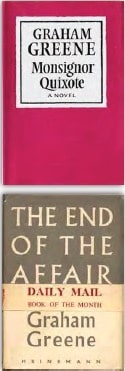 This tension between belief, doubt and seeking God is at the heart of his Catholic novels. A Catholic novel is one in which, as Flannery O’Connor said, “the truth as Christians know it has been used as a light to see the world by.” Four of Greene’s novels have been singled out as “the gold standard” of the Catholic novel — “Brighton Rock,” “The Power and the Glory,” “The Heart of the Matter” and “The End of the Affair.”
This tension between belief, doubt and seeking God is at the heart of his Catholic novels. A Catholic novel is one in which, as Flannery O’Connor said, “the truth as Christians know it has been used as a light to see the world by.” Four of Greene’s novels have been singled out as “the gold standard” of the Catholic novel — “Brighton Rock,” “The Power and the Glory,” “The Heart of the Matter” and “The End of the Affair.”
These books have unlovable protagonists who often passionately deny God. However, they also show that God has been patiently, lovingly pursuing the character to the end. Greene clearly shows the struggle and longing within the human soul. We can see that clearly in this excerpt from “The End of the Affair” where the jilted lover rages:
“I sat on my bed and I said to God: You’ve taken her, but you haven’t got me yet. I know Your cunning. It’s You who take us up to a high place and offer us the whole universe. You’re a devil, God, tempting us to leap. But I don’t want Your peace and I don’t want Your love. I wanted something very simple and very easy: I wanted Sarah for a lifetime and You took her away. With Your great schemes You ruin our happiness like a harvester ruins a mouse’s nest: I hate You, God, I hate You as though You existed.”
Greene was bipolar with a history of depression. He was an agnostic until his encounter with the priest teaching the faith. All his life, he traveled to exotic places around the world, which led to his recruitment as a spy for MI6. Interestingly, his spymaster and friend in the agency was the notorious mole Kim Philby. They stayed friends even after Philby fled to Moscow. He also had many affairs, which led to his estrangement from his wife. In some ways, he almost resembled the characters in his books.
“You cannot conceive, nor can I, of the appalling strangeness of the mercy of God.”
Greene’s books were some of the most popular novels of their time. His writing is crisp, exciting and often hilarious. He could work a moral or philosophical dilemma into even a political thriller. It’s important to remember that his books aren’t theology. They are trying to communicate a deeper truth.
For a funny, light entry to Green’s novels, try “Monsignor Quixote.” When Spanish priest Father Quixote is promoted to monsignor, he goes on a road trip in his aged car Rocinante with his friend Sancho, who is the newly deposed Communist mayor of the town. The rambling trip and conversation about faith and belief are amusing, thought-provoking and inspiring.
“The End of the Affair” is told from the point of view of an angry, jealous man after his lover has returned to her husband. This is a unique book about adultery thanks to the themes of discerning God’s existence and wrestling with what we believe and base our lives upon.
 Flannery O’Connor
Flannery O’Connor
Recognizing sin
Flannery O’Connor had a talent for startling violence, grotesqueness and sardonic humor. That might be why bringing up her work often makes people look panicked. It’s hard to get excited about unsympathetic, morally flawed characters and the disturbing situations they find themselves in. To be fair, this is an established genre, Southern Gothic, which uses the macabre and irony to explore social issues. But also to be fair, it’s not for everyone.
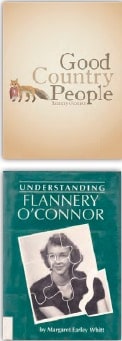 That can make it hard to see what O’Connor is trying to show below the surface. The violence is a catalyst that forces the characters to see the truth about themselves. As she wrote to a friend: “What people don’t realize is how much religion costs. They think faith is a big electric blanket when of course it is the cross. It is much harder to believe than not to believe. If you find you can’t believe, you must at least do this: keep an open mind. Keep it open toward faith, keep wanting it, keep asking for it, and leave the rest to God.”
That can make it hard to see what O’Connor is trying to show below the surface. The violence is a catalyst that forces the characters to see the truth about themselves. As she wrote to a friend: “What people don’t realize is how much religion costs. They think faith is a big electric blanket when of course it is the cross. It is much harder to believe than not to believe. If you find you can’t believe, you must at least do this: keep an open mind. Keep it open toward faith, keep wanting it, keep asking for it, and leave the rest to God.”
All her writing stems from this concept. Her characters cling to false comfort, and their sin is what makes them blind to the cross. O’Connor is trying to break through and open them up to choose grace and transformation.
Born in 1925, O’Connor grew up in the rural town of Milledgeville, Georgia. Being a devout Catholic often made her an outsider in the mostly Protestant society. After college, when she was studying creative writing, O’Connor developed lupus, which meant she had to live a quiet life with her mother. She maintained a writing schedule every day, although it was one that left plenty of time for raising peacocks, which soon became a byword in the neighborhood. O’Connor lived for 14 years after the diagnosis, writing two novels and 32 short stories.
“I have found that violence is strangely capable of returning my characters to reality and preparing them to accept their moment of grace. Their heads are so hard that almost nothing else will work.”
O’Connor’s relatively small amount of writing still makes a big impact today. Although challenging, her stories are worth the effort. Here are hints of what to look for in three short stories to help get your feet wet.
-
- “Revelation” — This turns on two Scriptures: the Pharisee and the sinner in the temple (cf. Lk 18:9-14) and Jesus saying, “the last will be first, and the first will be last” (Mt 20:16).
- “Good Country People” — Pointer is the devil and Hulga “ain’t so smart.” O’Connor commented, “frequently it is an action in which the devil has been the unwilling instrument of grace.”
- “Greenleaf” — The bull is Jesus, and Mrs. Greenleaf doesn’t see the world well.
A helpful book is “Understanding Flannery O’Connor” by Margaret Earley Whitt. It illuminates meaning in every story and both novels to help dig deeper.
Julie Davis writes from Texas.
| Other Christian authors worth mentioning |
|---|
| C.S. Lewis said: “The world does not need more Christian literature. What it needs is more Christians writing good literature.” These authors did just that. But each couldn’t resist slipping a distinctly Christian book into the mix.
“The Children of Men” by P.D. James “Death Comes for the Archbishop” by Willa Cather “In This House of Brede” by Rumer Godden “Eifelheim” by Michael Flynn |


